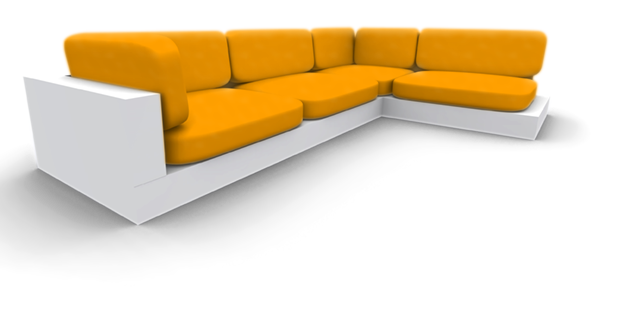Hallo,
ich habe folgendes Problem, für das es sicher eine einfache Lösung gibt. Ich möchte, dass sich mit dem Ändern der Fenstergröße meiner Anwendung, die Darstellung im selben Verhältnis mit ändert. Dies habe ich erreicht indem ich als Simple-Bsp. einen Button auf eine tablelayoutpanel lege. Das funktioniert ohne Überraschungen. Zusätzlich hätte ich gern, dass sich auch die Beschriftung auf dem Button mit ändert. Sicher ist es simpel zu lösen und ich habe nur den "Schalter" nicht gefunden. Eigentlich sicher nicht nötig, aber der Simpel-code des Designers um die gewählten Eigenschaften zu sehen (nutze SharpDevelop mit dem 3.5'er framework):
1:
2:
3:
4:
5:
6:
7:
8:
9:
10:
11:
12:
13:
14:
15:
16:
17:
18:
19:
20:
21:
22:
23:
24:
25:
26:
27:
28:
29:
30:
31:
32:
33:
34:
35:
36:
37:
38:
39:
40:
41:
42:
43:
44:
45:
46:
47:
48:
49:
50:
51:
52:
53:
54:
55:
56:
57:
58:
59:
60:
61:
62:
63:
64:
65:
66:
67:
68:
69:
70:
71:
72:
73:
74:
75:
76:
77:
78:
79:
80:
81:
82:
83:
| namespace test
{
partial class MainForm
{
private System.ComponentModel.IContainer components = null;
protected override void Dispose(bool disposing)
{
if (disposing) {
if (components != null) {
components.Dispose();
}
}
base.Dispose(disposing);
}
private void InitializeComponent()
{
this.tableLayoutPanel1 = new System.Windows.Forms.TableLayoutPanel();
this.button1 = new System.Windows.Forms.Button();
this.tableLayoutPanel1.SuspendLayout();
this.SuspendLayout();
this.tableLayoutPanel1.Anchor = ((System.Windows.Forms.AnchorStyles)((((System.Windows.Forms.AnchorStyles.Top | System.Windows.Forms.AnchorStyles.Bottom)
| System.Windows.Forms.AnchorStyles.Left)
| System.Windows.Forms.AnchorStyles.Right)));
this.tableLayoutPanel1.AutoSize = true;
this.tableLayoutPanel1.ColumnCount = 3;
this.tableLayoutPanel1.ColumnStyles.Add(new System.Windows.Forms.ColumnStyle(System.Windows.Forms.SizeType.Percent, 37.28814F));
this.tableLayoutPanel1.ColumnStyles.Add(new System.Windows.Forms.ColumnStyle(System.Windows.Forms.SizeType.Percent, 29.37853F));
this.tableLayoutPanel1.ColumnStyles.Add(new System.Windows.Forms.ColumnStyle(System.Windows.Forms.SizeType.Percent, 33.33333F));
this.tableLayoutPanel1.Controls.Add(this.button1, 1, 1);
this.tableLayoutPanel1.Location = new System.Drawing.Point(1, 3);
this.tableLayoutPanel1.Margin = new System.Windows.Forms.Padding(0);
this.tableLayoutPanel1.Name = "tableLayoutPanel1";
this.tableLayoutPanel1.RowCount = 3;
this.tableLayoutPanel1.RowStyles.Add(new System.Windows.Forms.RowStyle(System.Windows.Forms.SizeType.Percent, 81.81818F));
this.tableLayoutPanel1.RowStyles.Add(new System.Windows.Forms.RowStyle(System.Windows.Forms.SizeType.Percent, 18.18182F));
this.tableLayoutPanel1.RowStyles.Add(new System.Windows.Forms.RowStyle(System.Windows.Forms.SizeType.Absolute, 109F));
this.tableLayoutPanel1.Size = new System.Drawing.Size(291, 269);
this.tableLayoutPanel1.TabIndex = 0;
this.button1.Anchor = ((System.Windows.Forms.AnchorStyles)((((System.Windows.Forms.AnchorStyles.Top | System.Windows.Forms.AnchorStyles.Bottom)
| System.Windows.Forms.AnchorStyles.Left)
| System.Windows.Forms.AnchorStyles.Right)));
this.button1.Location = new System.Drawing.Point(111, 133);
this.button1.Name = "button1";
this.button1.Size = new System.Drawing.Size(79, 23);
this.button1.TabIndex = 0;
this.button1.Text = "button1";
this.button1.UseVisualStyleBackColor = true;
this.AutoScaleMode = System.Windows.Forms.AutoScaleMode.Inherit;
this.ClientSize = new System.Drawing.Size(292, 266);
this.Controls.Add(this.tableLayoutPanel1);
this.Name = "MainForm";
this.Text = "test";
this.tableLayoutPanel1.ResumeLayout(false);
this.ResumeLayout(false);
this.PerformLayout();
}
private System.Windows.Forms.TableLayoutPanel tableLayoutPanel1;
private System.Windows.Forms.Button button1;
}
} |
Thx
Moderiert von  Kha: C#-Tags hinzugefügt
Kha: C#-Tags hinzugefügt


























